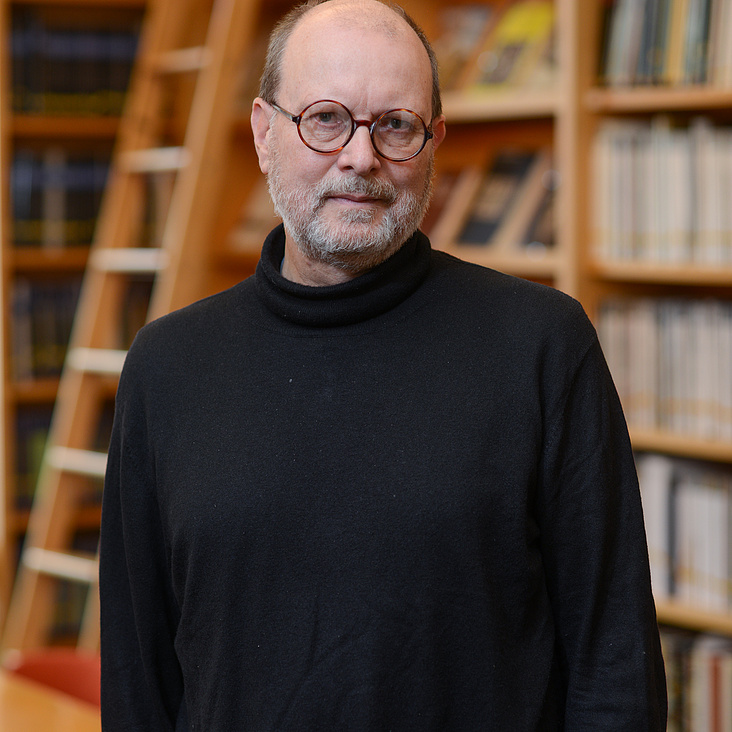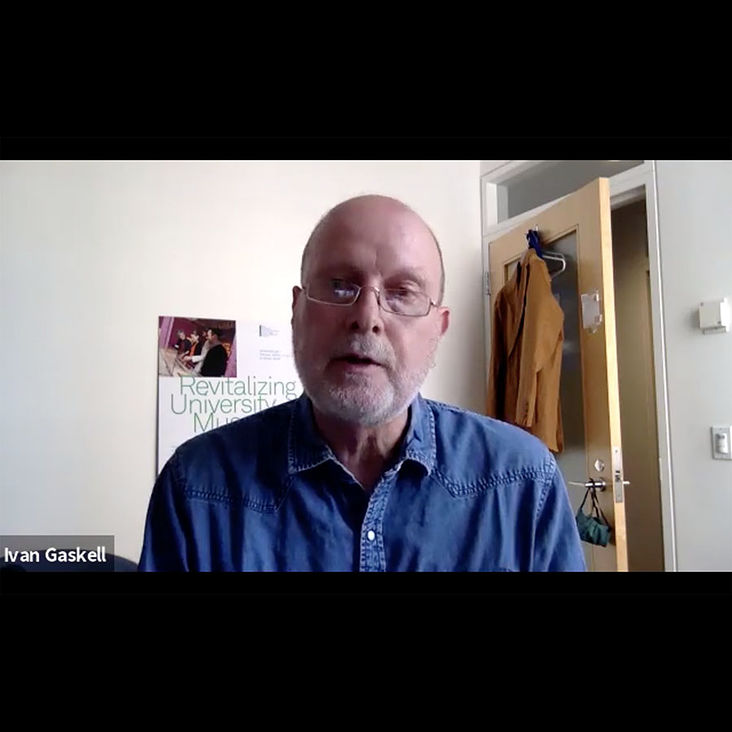
Photo: Justin Ides
Ivan Gaskell will take up his new duties as BGC professor, curator, and head of the Focus Gallery in January 2012. Dr. Gaskell received his BA and MA in Modern History at Oxford University, his MA in the History of Western Art at London University, and a PhD in the History of Art at Cambridge University. At Harvard University since 1991, he was most recently the Margaret S. Winthrop Curator in the Department of Paintings, Sculpture and Decorative Arts at Harvard’s Fogg Museum and Senior Lecturer in the Department of History. Before that, he was a consultant for the Thyssen-Bornemisza Foundation (1987-1991), Speelman Fellow of Wolfson College at Cambridge University (1983-1987) and Research Fellow and Academic Curatorial Assistant at The Warburg Institute of London University (1980-1983).
As a cultural historian, Dr. Gaskell writes history from artifacts, including artworks. His scholarship is at the intersection of history, art history, anthropology, museology, and philosophy. His teaching invariably involves the use of actual objects. He has been a trustee of the American Society for Aesthetics, and serves on the editorial boards of Contemporary Aesthetics, Res: Anthropology and Aesthetics, Word & Image, and World Art. He has published books and articles on a wide range of topics, from the paintings of Johannes Vermeer, to Native American baskets from southern Louisiana. He is preparing a book on writing history from American seventeenth through nineteenth-century artifacts.
What has brought you to the BGC?
The exhibition program has long attracted me, but I have been brought to the BGC by a gradually deepening involvement. First, I accepted a lecture invitation; then I participated in the workshop to begin the book series Cultural Histories of the Material World. I was soon addicted. I value the fact that the BGC has abolished segregation among fields of historical and theoretical study centered on tangible things of all kinds, but without sacrificing the attention to detail that specialization affords.I also admire the lack of hierarchy among media. Textiles, paintings, and American Indian basketry—and much else—are all on a par. I value the lack of hierarchy among locations—Indian Country is as important as Italy. This is a young institution, a nimble institution, where the ambitions—of students, of curators, of faculty—need not run into the sand of custom, but can actually be realized.
What are your areas of interest?
I am interested in how we might undertake certain kinds of inquiry rather than in particular geographical areas or chronological periods. I am concerned with human beings’ relationships with one another as mediated by the tangible things they encounter, make, and use. The radical instability, both physical and conceptual, of tangible things preoccupies me. Humans often use things in any number of ways regardless of their purpose. I value working with actual tangible things themselves. Their insistent materiality and their elusive immateriality both fix and complicate my inquiries, bewildering me, but obliging me to test my fondest theories about them empirically. I do history, and I do philosophy. Bringing them together often eludes me, but I try. The material I work with varies from seventeenth-century Dutch and Flemish paintings, to things from North America, to Kuba textiles from Congo. I hope to broaden my range yet further at the BGC.What do you perceive as the mission of the Focus Gallery?
As is already evident from the first two exhibitions, the Focus Gallery provides students and faculty at the BGC with a laboratory in which to test theories empirically. I see it as a constituent of a scholarly process that encompasses teaching, research by both faculty and students, publishing both hard copy and on the Web, and exhibiting. Although the design and installation skills of the gallery staff will make each show look wonderful, I do not see Focus exhibitions as finished products, but rather as experiments leading to further work.My task is to encourage, coordinate, and offer constructive critique to project organizers. I expect all involved will demonstrate that the BGC is an integrated scholarly enterprise in which the whole is greater than the sum of its parts. I bring to this enterprise twenty years of curatorial experience in a university museum, and yet longer as a faculty member.












